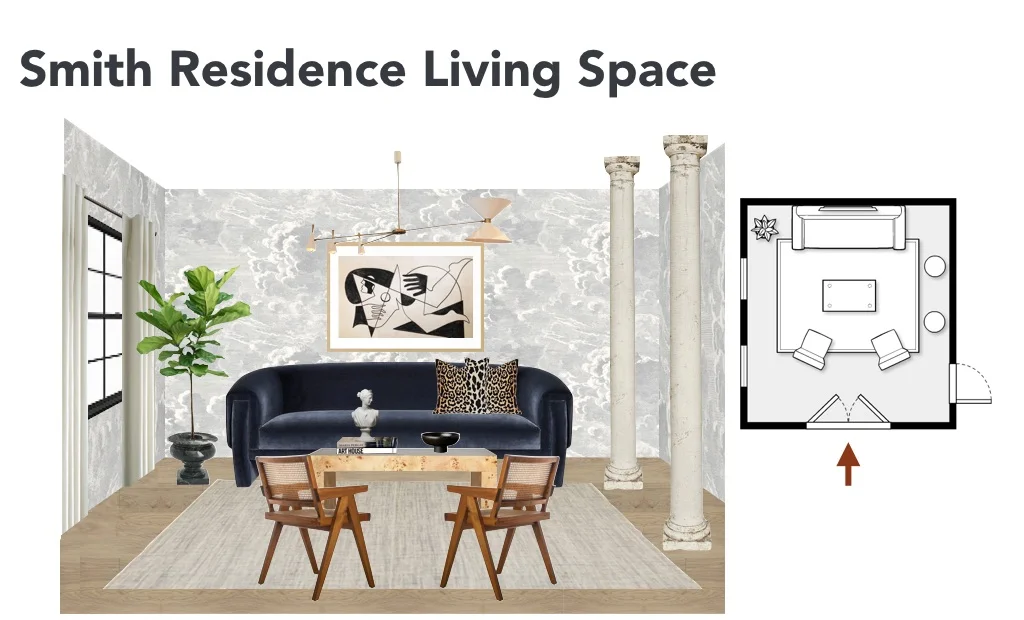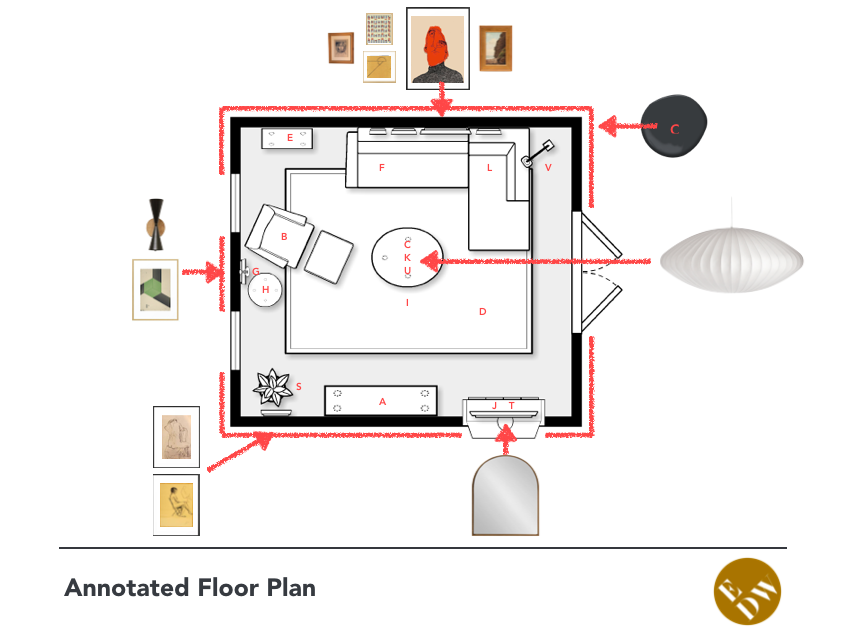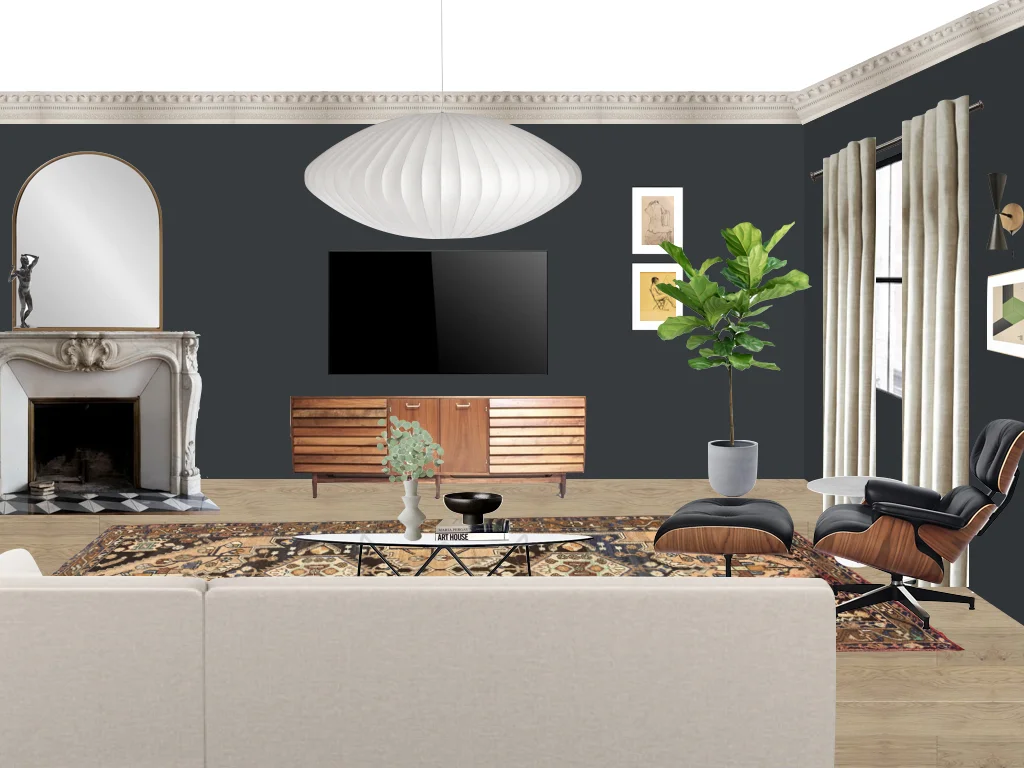All About E-Design
The term E-Design seems to be everywhere lately! It’s now the fastest growing segment of the interior design industry. Full-service Interior Designers are beginning to offer e-design packages on their websites. There are entire companies dedicated to connecting potential clients with E-Designers (Decorist, Havenly, and more). But what exactly IS e-design? What does the process look like from a client’s perspective? What about from a designer’s point of view?
In the simplest terms, e-design is interior design done virtually. With today’s technology its easier than ever to design a beautiful space from afar. Tools like video chat, collaborative Pinterest boards, and photo sharing make it simple for designers have meetings with clients and take “site visits” without physically being in their client’s homes.
E-Design typically offers a greater level of convenience, affordability and speed than traditional interior design. Its a process that’s democratizing design; no longer are interior design services only attainable for the super wealthy. E-Design gives almost anyone the opportunity to have a beautifully curated home or commercial space.
Working with an E-Designer: What to expect as a Client
If you’ve found an interior designer you love online but they don’t live near you, chances are they will be willing to work with you virtually. E-Design has opened the doors for clients and designers to work together from across the globe.
Traditionally, an interior designer’s e-design package will include the following:
2. Annotated Floor Plan
As a client, you will be provided with a floor plan layout of your home. Because clients will install their space on their own, this plan will include a numerical system indicating where to place the products in your home. You’ll also be provided with hanging dimensions and installation instructions. See examples below!
1. Design Board
The image above is a great example of a design board. A design board (or mood board) is created based on the designers interpretation of their client’s aesthetic and functional needs within the space. A board should be a representation of what the space will look like and the products used.
3. Shopping List
Your designer will provide you with a shopping list that includes all the products in your design. You will be purchasing these items on your own, at your own speed.
4. Revisions
Included in most e-design packages are 2-3 rounds of revisions. As a client, its typical to want to switch out a few of the furniture or accessory items. Your designer will be able to accommodate those edits.
Design board from the E-Design Workshop curriculum.
The E-Design Process as an Interior Designer
As a designer, the process of E-Design is quite different than a full-service Interior Design offering. Below are the steps as outlined in my program The E-Design Workshop.
1) Connect with your client to obtain the information you need to design:
Technical information
Aesthetic & style information
Functionality
Budget
2) Provide your client with a Statement of Work document. This includes:
A scope of work
Timeline
Your pricing & payment terms
A basic contract
3) Creative direction for your project
Find and save inspiration
Create a collaborative project Pinterest board
4) Layout your space
Scale the plan (hand drawn or architectural) that your client provided
Create a space plan
5) Start designing! Source the items for your space
Shop online (or in-store) to find the furniture, wall coverings, rugs, art and accessories you'd like to use in your project
Use your project Pinterest board to save and organize these items
6) Create your design board
Make a visual representation of the space you're designing
7) Finalize your furniture plan & elevations
Scale the furniture in your space plan to ensure it fits
Create elevations for hanging heights
8) Create a shopping list in Google Sheets or Excel
Make sure your design stays under budget
Add information to ensure accurate purchasing
9) Final presentation
Create a branded presentation
Add your design board, furniture plan, product pages, and shopping list
10) Revisions
Revise your design based on client feedback
11) Purchase (or have your client purchase) the furniture and accessories
If you’re thinking of adding a virtual interior design offering to your services, this program will guide you step by step through the most efficient programs and tools to use. You’ll walk through each step of the process to provide designs that your clients love! Learn the best ways to make a design board and floor plans, get accurate plan information virtually, and create presentations to knock your clients socks off.
If you’re not yet a designer but thinking of entering the design world, learning these E-Design techniques is a great jumping off point for your career. Complete this program and you’ll be ready to take on virtual clients.
Maybe you’re simply interested in interiors and designing your own apartment or home. This workshop is for you as well!
Check out more details at www.edesignworkshop.com.





